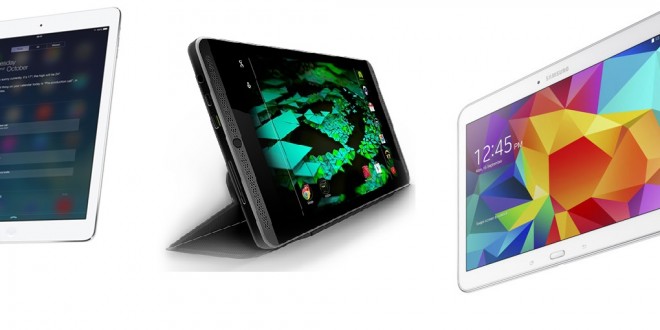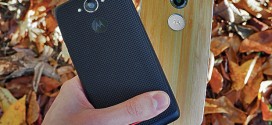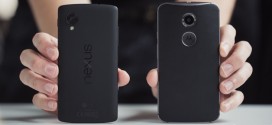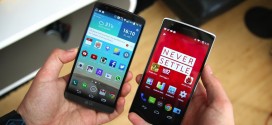The iPad Air 2 is the latest tablet from Apple released this Fall with a few new features and a slight design modification. As we’ve become used to, the slate quickly became very popular and reviewers of the iPad Air 2 are pretty happy with the tablet’s functionality, design, battery life and power, but no really stoked about its high price. When it comes to high-end tablets, you won’t get off easy, so if you’re searching for a cheap, yet powerful tablet, none of the three mentioned in the title belong to that category.
Even though the Nvidia Shield Tablet and Galaxy Tab 4 10.1 are not overly expensive, they are not cheap, in my opinion. If you want cheaper versions that would do a good job for you while looking the part, you should try the Amazon Kindle Fire, Dell Venue 7 or Asus MeMo Pad lines. In this comparison, we are going to analyze the iPad Air 2 to see whether it could outdo the Shield Tablet or the Galaxy Tab 4. At the same time, you will get a good idea about what kind of high-end tablets this year has brought to us and why one would be better than the other.
Not to say these three tablets dominate market, since the Nexus 9 is a pretty good bet at the moment and Samsung does have a Galaxy Tab S that is worth checking out. We’ve also seen new releases from Lenovo, like the Yoga Tablet 2, 2 Pro and Yoga 3 Pro. These slates (or convertible, in the latter’s case) are good examples of out-of-the-box thinking, as the company added in a projector to this year’s Pro tablet as well as a 360 degree rotation to the 3 Pro. The Tablet 2 is great, too, with a hang-mode and great battery life. Still, the Lenovo devices are pretty expensive and these three kind of outdo them when it comes to performance.
The iPad Air 2 was a pretty successful release and the device definitely took a bit of limelight away from the previously launched dynamic duo of the iPhone 6 and 6 Plus. Even though the slate hasn’t changed much since the original, it still managed to rack up the extra processing power and minor changes in design that made tech enthusiasts crave for the tablet. The iPad Air 2 comes in lighter and thinner than the original iPad Air, which has actually been criticized by some. Users say that they would have liked a bigger battery instead of a thinner device, a choice voiced in discussions about the iPhone 6 Plus as well. While I do agree with the fact that maybe the iPad Air 2 shouldn’t have been so thin and have a larger battery instead, I’m pretty confident that current battery tests prove a pretty worthwhile lifespan for the iPad Air 2.
The new Apple A8X CPU is optimized and alongside iOS 8, the iPad Air 2 can hang on for even 10 hours of mixed use. You’ve also the M8 coprocessor under the hood, which is working the sensors embedded in the tablet. Even though we might not hit 10 hours often, if you’re an average user who doesn’t edit photos and videos on a tablet, it should definitely have the juice to get you through the day. The new processor in tandem with the new OS make the whole iPad Air 2 experience pretty nice, although I do mind having to use iTunes and the lack of a microSD card slot. And I miss the customizable lock screen of Android.
Since CPU is not all there is to performance, you must know that the iPad Air 2 has 2 GB RAM and is available in either 16, 64 or 128 GB internal storage. Each storage space upgrade will set you back $100, and the base model with 16 GB storage and Wi-Fi costs $500 in the Apple Store. If you want LTE in the package, you’re going to have to scrape up $630 for the 16 GB version with both Wi-Fi and Cellular. Since you don’t have a microSD card slot included on the iPad Air 2, you will probably have to opt for at least 32 GB storage. But you can make do with 16, too, as long as you use cloud storage to help out.
At the launch event, we were glad to hear that the iPad Air 2 would come with Touch ID, and a greatly improved one, too. While we weren’t surprised by the new addition, since we had reliable sources whispering that the fingerprint sensor would surely be included in the new tablet. Any way, besides Touch ID, the iPad Air 2 boasts with a 9.7 inch LED-backlit IPS LCD panel with a 1536*2048 resolution and 264 ppi pixel density. While that resolution could have been made better, the overall user experience is great when it comes to display, as viewing angles are pretty sweet and outdoor visibility has significantly improved since its predecessor. Nonetheless, in a time where people are clamoring on about QHD, maybe it would have been better to up that resolution and get a more future-proof device. At that price, it certainly would have benefited.
Moving on to the camera setup, the iPad Air 2, in accordance to history as we’ve been used to Apple products having good quality cameras on board, doesn’t disappoint. Apple decided to put an 8 MP iSight camera on the rear, which comes in handy and is easy to use since the camera app in iOS 8 brought about a bit of control and manual settings. A 1.2 MP FaceTime camera has also been slapped on the front, which hasn’t changed much.
Since we’re more after performance in our comparison, the iPad Air 2 ranks pretty well, rarely encountering lag or any issues loading apps or games. The Nvidia Shield Tablet, which just started getting the new Android 5.0 Lollipop mobile OS from Google, is worthy competition against Apple’s latest tablet. The Shield Tablet was made with gamers in mind, so it’s not designed to be as fluid in design and use as the iPad Air 2, but it certainly is a powerhouse.
The Nvidia Shield Tablet comes with an Nvidia Tegra K1 CPU, the same one being used in the Nexus 9. With that in mind, those of you who are familiar with the Shield Tablet know that the CPU coupled with Android 5.0 Lollipop is working out great, but we do have a few bugs in there, nothing Android 5.0.1 couldn’t solve. Nonetheless, the slate is clearly made for gaming, but it does not tremble before other uses, that’s for sure. If you’re into editing and customizing, it probably won’t be as smooth as the iPad Air 2, but it will perform quite well nonetheless.
That CPU has 2 GB RAM to work with, and 16 GB internal storage available, with microSD card expansion possible. While we are pretty satisfied with the Shield Tablet performance, we can’t say we’re not impressed by the rest. Nvidia decided to slap two 5 MP cameras on the front and rear of the tablet, and while they’re not something you would write home about, they’re not bad and you might find them useful. We’ve got an 8 inch display with a 1200*1920 resolution that amounts to 283 ppi pixel density, which is decent resolution on a compact tablet. Even though the Nvidia Shield Tablet isn’t as portable as its predecessor, the Nvidia Shield Portable, it still offers good gaming and great performance.
The Shield Tablet is definitely not just for gamers, but its performance is optimized for that: visual quality and lag-free gameplay. When it comes to multitasking, we might get some annoying little lags or bugs here and there, but nothing that would become too annoying over time. As I’ve mentioned earlier, a software upgrade can always mend issues a bit. Aside from that, the Nvidia Shield Tablet price isn’t as high as the iPad Air 2 price, as the Wi-Fi only tablet will set you back around $300, but if you want the 32 GB LTE version you’ll have to scrape up $100 more. Still, that is quite below the Apple iPad Air 2 price, so we can classify it as a bit of a deal.
As for our last competitor in this comparison, the Galaxy Tab 4 10.1. This is the biggest of the slates we’ve chosen to discuss today, with a 10.1 inch display that has a 1280*800 resolution that amounts to a sad 149 ppi pixel density. Clearly, we haven’t saved the best for last. Even though the display on this slate is a bit on the low-end, the slate is still optimal for mixed use and collective use. Still, the Galaxy Tab 4 10.1 is the weakest link in the chain, yet the 16 GB Wi-Fi only version of the slate sets you back just as much as the Nvidia Shield Tablet: $300. If you want 32 GB and LTE, you can get it for $400. You would think that with an inferior display, you are clearly paying for the performance, right? Wrong.
While the Snapdragon 400 CPU backed by 1.5 GB RAM isn’t a bad combination, it’s not something that would warrant such a price tag unless it had a good quality display to boast with. Alas, Samsung didn’t strain too much with the Galaxy Tab 4 10.1. While you do have a huge display to work with, that would have been nicer if you weren’t able to discern the pixels in that Youtube video you’re watching. But only if you’re up close. Otherwise, viewing angles and outdoor visibility is acceptable on the slate and the mediocre hardware still makes for a pretty useful tablet. Nonetheless, this slate is a pretty good performer, with smooth multitasking and responsiveness.
You’ve got 16 GB internal storage available on the Wi-Fi version, but you can make use of the microSD card slot in the device in case you want to expand that storage space. Samsung decided to put a 3.15 MP sensor on the rear of the tablet and a 1.3 MP one on the front, so that you can have some sort of mean to capture a photo of your surroundings if opportunity or need for such a thing arose. But you would rather hope it didn’t as the two cameras on the slate aren’t very bright. Still, you can make due if you just need a snapshot or two. What you get extra with the Galaxy Tab 4 10.1 is an IR blaster, missing from both contenders. Battery life isn’t great, which is not surprising with large tablets. You can get about 7 to 8 hours of moderate use out of this one, which should suffice for the average user.
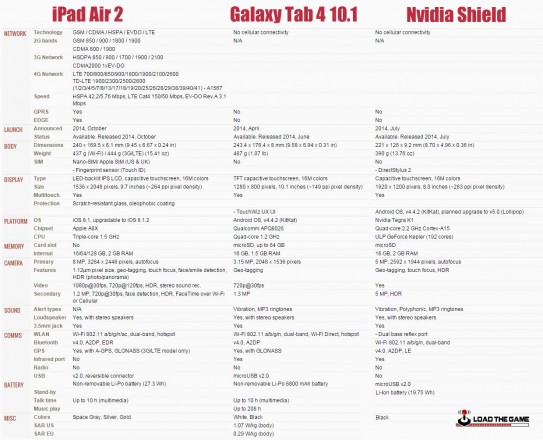
Overall, the Galaxy Tab 4 10.0 offers a pretty solid Android experience with a large screen, but its specs and hardware can now be officially called outdated. Since you can get the Nvidia Shield Tablet for the same price and have a higher resolution, yet considerably smaller display, as well as better performance, I would advise shopping for the latter if you want performance and a longer shelf-life. But if you intend to use your new tablet as an entertainment device and maybe even use it collectively with your family members, friends or roommates, the Galaxy Tab 4 10.1 should do just fine and having a bigger display might come in handier than the Nvidia Tegra K1 CPU.
I wouldn’t say the Nvidia Shield Tablet is the winner of this comparison, since the iPad Air 2 is quite the fine premium product that will surely meet your needs, especially if you are an Apple fan. Nonetheless, the Shield Tablet wins the bang for buck award, as it allows for similar performance on a smaller display as the iPad Air 2 does. Nonetheless, if you want it all in one package, the iPad Air 2 should certainly do it for you. High resolution large display with a new operating system and pretty good hardware make for a device that will probably impress you and you will sense its value even if you’re thinking about gifting it or re-selling it.
 Load the Game Video Games, Reviews, Game News, Game Reviews & Game Video Trailers
Load the Game Video Games, Reviews, Game News, Game Reviews & Game Video Trailers
